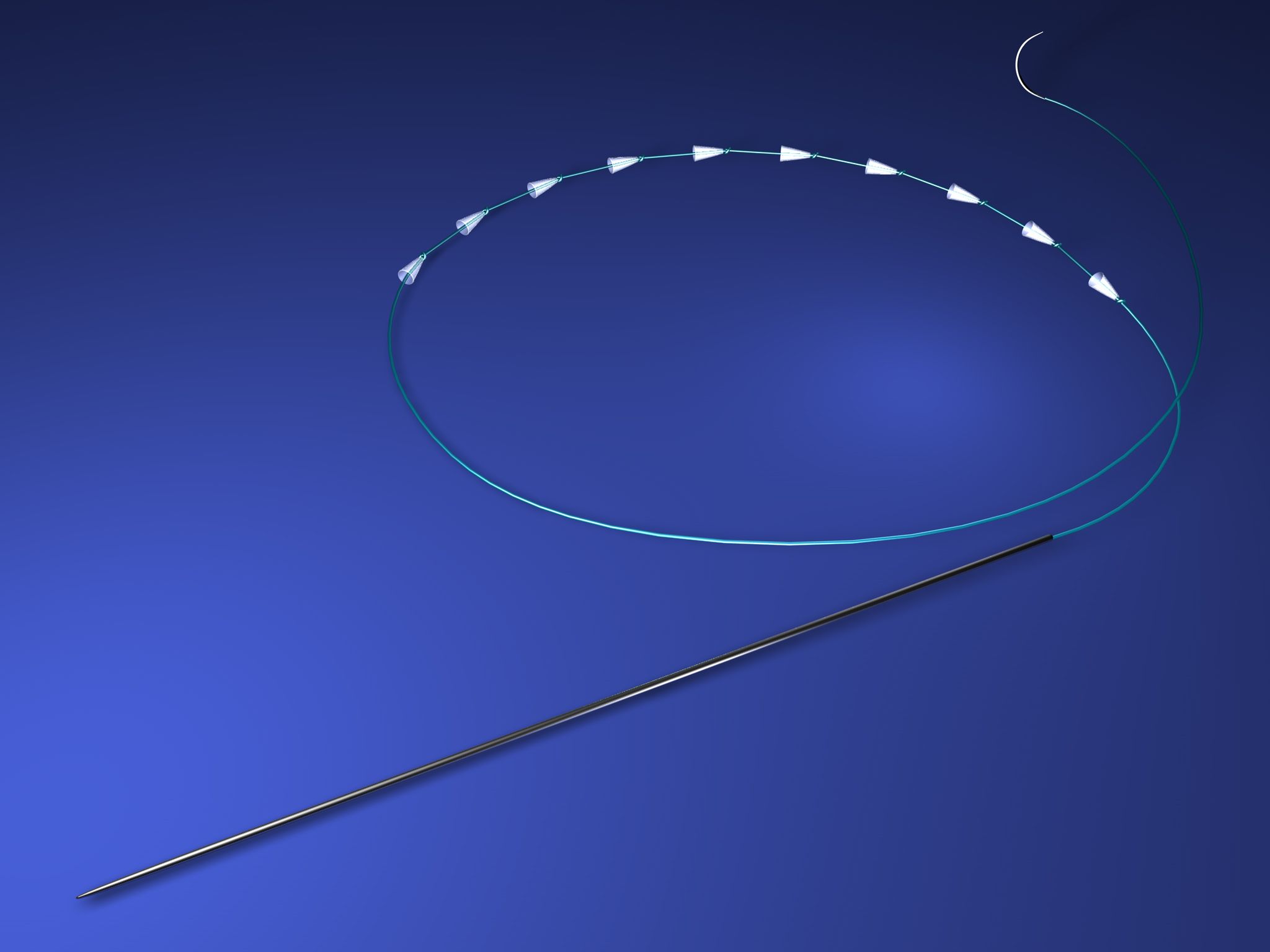- Case-Based Roundtable
- General Dermatology
- Eczema
- Chronic Hand Eczema
- Alopecia
- Aesthetics
- Vitiligo
- COVID-19
- Actinic Keratosis
- Precision Medicine and Biologics
- Rare Disease
- Wound Care
- Rosacea
- Psoriasis
- Psoriatic Arthritis
- Atopic Dermatitis
- Melasma
- NP and PA
- Skin Cancer
- Hidradenitis Suppurativa
- Drug Watch
- Pigmentary Disorders
- Acne
- Pediatric Dermatology
- Practice Management
- Prurigo Nodularis
- Buy-and-Bill
Article
Under suspension: Suture lift technique permits retention of facial tissue
Author(s):
Augusta, Ga. - A new technique for soft-tissue suture lifting in the face is an alternative to the minimally invasive facelift. The technique uses clear, modified polypropylene with bio-absorbable cones and multiple point fixations, says Gloria Mabel Gamboa, M.D., F.A.C.S., associate professor at the Medical College of Georgia in Augusta, Ga.
Augusta, Ga. - A new technique for soft-tissue suture lifting in the face is an alternative to the minimally invasive facelift. The technique uses clear, modified polypropylene with bio-absorbable cones and multiple point fixations, says Gloria Mabel Gamboa, M.D., F.A.C.S., associate professor at the Medical College of Georgia in Augusta, Ga.
The Silhouette Lift face suture permits tissue retention inside and around the hollow cones, giving tension lifts to the sagging tissues.
There is a stronger mechanism of suspension because of the fibrosis that develops around the sutures. In addition, the suture shape with multiple points of fixation assists the cone suspension.

The Silhouette Lift face suture is a technique that permits tissue retention inside and around the hollow cones, giving tension lifts to the sagging tissues.Photo: Gloria Mabel Gamboa, M.D.
Dr. Gamboa says the approach addresses minimal sagging of the face and cheeks, and it is particularly appropriate for darker-skinned individuals.
"This (darker-skinned) population does not want to have a facelift, because scars show more and the risk of keloid scarring is greater with such a procedure," Dr. Gamboa says.
"With this technique, the scars are 2 to 4 cm inside the hairline," she says.
Clinical study
In one study of suture suspension using Silhouette Lift sutures, a total of 24 surgical procedures were conducted in 17 patients with six to 14 months follow-up.
The suture lift reportedly created anterior projections to the cheek, elevated the corner of the mouth and improved the jowls.
Of the 24 procedures, 12 were mid-face rejuvenations, three were to treat facial palsy asymmetry, five were for neck aesthetic procedures and two were to correct brow ptosis and asymmetry. Because brow ptosis gives the face a tired look and can accentuate deformities of the upper eyelid, patients seek a means to correct brow ptosis and brow asymmetry.
Patients returned to their normal activities in three or four days, and the sequaelae that they experienced involved only minimal bruising and temporary edema. The downtime following the procedure can be as short as two days before activities are resumed.
Dr. Gamboa says that the Silhouette Lift sutures are manufactured with 3-0 polypropylene, which has been used in many other surgical procedures of the body, and with small biocompatible material, which allows greater flexibility with the sutures.
The sutures, for example, can safely be re-suspended if sagging needs to be corrected. The procedure targets signs of aging in the nasal-labial folds, expression lines, jowls and neck.
Technique
In terms of technique, the suture is inserted through a small incision, about 2 cm, on the temporal area using the straight needle. The suture penetrates through superficial subcutaneous tissue, exiting at the desired location in the malar or sub-malar/peri-oral area.
The sutures are fixed in pairs to the deep temporal fascia, which has been reinforced with a small surgical mesh, about 1.5 cm, at the level of the temporal incision.

In terms of technique, the suture is inserted through a small incision, about 2 cm, on the temporal area using the straight needle. The suture penetrates through superficial subcutaneous tissue, exiting at the desired location in the malar or sub-malar/peri-oral area. The sutures are fixed in pairs to the deep temporal fascia, which has been reinforced with a small surgical mesh, about 1.5 cm, at the level of the temporal incision.Photo: Gloria Mabel Gamboa, M.D.
Patient population
Patients who typically present for this procedure are women ages 40 through 50, according to Dr. Gamboa, but patients in their thirties who have wrinkles and are seeking minimal facial rejuvenation can opt for the procedure.
"Younger patients can undergo this procedure and achieve rejuvenation with these sutures," Dr. Gamboa says. "It will improve their cosmetic appearance."
The procedure is done on an outpatient basis, and local anesthetic is administered. The procedure avoids the need for hospitalization, general anesthetic and a prolonged recovery, Dr. Gamboa says.
Men prefer the procedure to the traditional facelift because any incisions left after the suture suspension technique for mid-face and neck rejuvenation are hidden inside the hairline, according to Dr. Gamboa.
Patients can undergo an adjuvant procedure, such as a chemical peel, with the suture suspension procedure to optimize their facial appearance, Dr. Gamboa says. DT
Disclosure: Dr. Gamboa reports no relevant financial disclosures.






